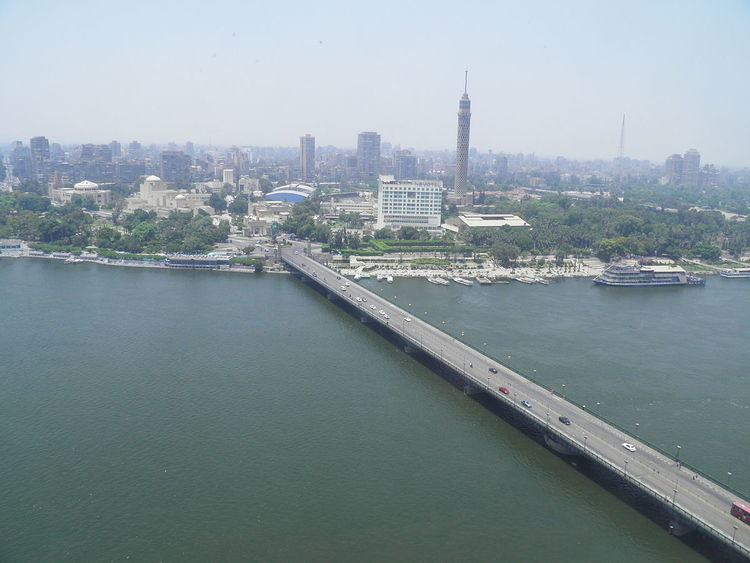Carries Tahrir Street Material steel Designer Ralph Anthony Freeman Construction started 4 February 1931 Body of water Nile | Design arch No. of spans 7 Total length 1,932 m Opened 6 June 1933 | |
 | ||
Engineering design by Dorman, Long and Co. Ltd. Address 50 ش قصر النيل، وسط البلد، Cairo Governorate, Egypt Similar 6th October Bridge, Gezira Island, Tahrir Square, Abdeen Palace, Al‑Azhar Park | ||
New model army qasr el nil bridge from the album between dog and wolf out now
The Qasr El Nil Bridge (originally named Khedive Ismail Bridge), also commonly spelled Kasr El Nil Bridge, is a historic structure dating to 1931 and replaced the first bridge to span the Nile River in central Cairo, Egypt. It connects Tahrir Square in downtown Cairo to the modern Cairo Opera complex toward the southern end of Gezira Island. At the bridge's east and west approaches are four famous large stone lion statues; they are late 19th-century works by Henri Alfred Jacquemart, French sculptor and animalier. The newer and wider 6th October Bridge parallels its route 0.8 kilometres (0.50 mi) just to the north.
Contents
- New model army qasr el nil bridge from the album between dog and wolf out now
- Route
- Construction and name
- Public use and demonstrations
- 2011 Egyptian Revolution
- References
Route
Qasr El Nil Street crosses over the Nile on the bridge, from the east bank area Tahrir Square—Liberation Square in Downtown Cairo, past the huge The Mogamma government building and the Headquarters of the Arab League, then onto the Qasr El Nil Bridge over the river to Gezira Island. There it meets Opera Square and the Cairo Opera House, with connections north to the Cairo Tower and the Zamalek district, and south across the island to the Tahrir Bridge across a smaller branch of the Nile to Tahrir Street in the Agouza district on the west bank.
Construction and name
The previous bridge on the site, El Gezira Bridge, was built between 1869 and 1871 by Linant de Bellefonds with the participation of France's Five-Lilles Company. The foundation stone for the present Qasr El Nil Bridge was laid by King Fuad I on February 4, 1931. After over two years of construction, undertaken by Dorman Long & Co. Ltd, King Fuad inaugurated the bridge's opening on June 6, 1933.
The bridge was originally named Khedive Ismail Bridge after King Fuad's father, Khedive Isma'il Pasha. After the Egyptian Revolution of 1952, the name of the bridge, as well as other Egyptian buildings and bridges, were changed. This bridge was renamed Qasr El Nil in Arabic, which translates to Palace of the Nile.
Public use and demonstrations
The Qasr El Nil Bridge, with sidewalks, is popular for strolling in the evenings. The bridge offers views of the river, as well as landmark buildings, hotels, and other structures on the island and along the Nile corniche on the west bank. The bridge is popular as location for young Egyptian friends and couples to have an inexpensive outdoor date.
2011 Egyptian Revolution
The bridge has been an ongoing site in the 2011 Egyptian revolution, along with the nearby 6th October Bridge, for public demonstrations on it and as a major route east to Tahrir Square protest gatherings.
